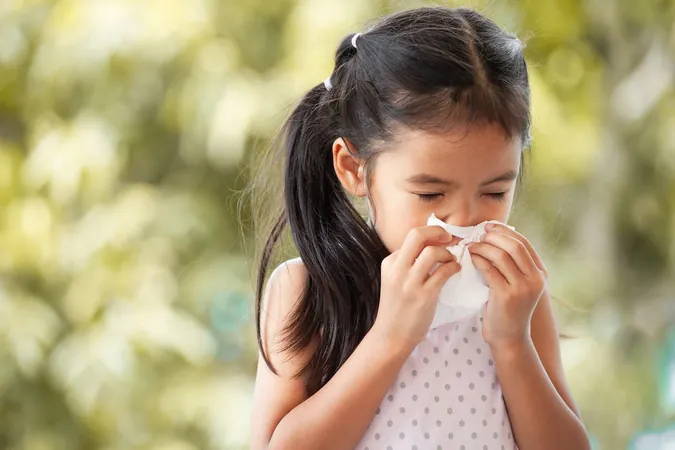
The Dual Impact of Genetics and Environment on Childhood Allergies: What You Need to Know
2025-04-03
Author: Charlotte
Understanding the Interplay of Genetics and Environment
Recent research published in *Translational Pediatrics* reveals that both genetic predispositions and environmental conditions are crucial in determining the onset of allergic diseases in children. The study, led by Jing Wang from Qilu Hospital of Shandong University in China, highlights a significant finding: family history alone does not dictate the development of conditions such as atopic dermatitis, allergic rhinitis, and wheezing. Instead, it is primarily environmental factors that shape these allergic outcomes.
The Allergic March
The so-called "allergic march" often starts early in life, beginning with infantile atopic dermatitis observed in infants as young as 1 to 3 months. This condition is usually associated with food allergies, which can evolve as the child grows. Previous research has shown a link between early atopic dermatitis and the later development of asthma and rhinitis by the age of 7.
A Comprehensive Study
To investigate the interplay of genetics and environment, researchers conducted a prospective clinical study involving 80 sets of identical and fraternal twins, all under the age of 4. By utilizing a comprehensive questionnaire over 48 months, they aimed to pinpoint the factors influencing allergic disease progression. Interestingly, both identical and fraternal twins presented similar rates of inhalation allergens around the age of 2, ranging from 60% to 80%.
Key Findings on Allergy Severity
One pivotal finding shed light on the severity of allergic conditions: identical twins exhibited a much higher incidence of atopic dermatitis (100% vs. 17%), rhinitis (100% vs. 20%), and food allergies (100% vs. 27%) compared to their fraternal counterparts. However, the occurrence of wheezing did not show a notable difference between the two groups.
Dynamic Changes in Allergic Conditions
As the children aged, the study observed a decrease in atopic dermatitis cases from 80% to 16.7% among identical twins, while incidences of rhinitis and wheezing increased—demonstrating a dynamic shift in allergy manifestations as children mature.
Influential Factors for Allergic Responses
Moreover, the analysis revealed that identical twins displayed a greater consistency in response to inhaled and food allergens. Factors influencing these allergic responses included being male, low birth weight (under 2500g), and living in certain types of housing or having pets.
Environmental Triggers for Fraternal Twins
For fraternal twins, specific environmental triggers were identified: instances of atopic dermatitis were higher in those born preterm (under 37 weeks) or exposed to indoor plants. Meanwhile, rhinitis and wheezing were associated with neonatal asphyxia and exposure to smoke, highlighting the complex web of influences contributing to childhood allergies.
Conclusion: A Nuanced Approach to Allergies
In conclusion, this enlightening study underscores that the development of allergic diseases in children cannot be attributed solely to genetic factors; environmental elements play an equally significant role. Interestingly, the specific factors influencing allergies can differ between identical and fraternal twins, suggesting that understanding the allergies' manifestations may require a nuanced approach. Parents and caregivers should be aware of both genetic history and environmental influences when addressing allergy concerns in children.









 Brasil (PT)
Brasil (PT)
 Canada (EN)
Canada (EN)
 Chile (ES)
Chile (ES)
 Česko (CS)
Česko (CS)
 대한민국 (KO)
대한민국 (KO)
 España (ES)
España (ES)
 France (FR)
France (FR)
 Hong Kong (EN)
Hong Kong (EN)
 Italia (IT)
Italia (IT)
 日本 (JA)
日本 (JA)
 Magyarország (HU)
Magyarország (HU)
 Norge (NO)
Norge (NO)
 Polska (PL)
Polska (PL)
 Schweiz (DE)
Schweiz (DE)
 Singapore (EN)
Singapore (EN)
 Sverige (SV)
Sverige (SV)
 Suomi (FI)
Suomi (FI)
 Türkiye (TR)
Türkiye (TR)
 الإمارات العربية المتحدة (AR)
الإمارات العربية المتحدة (AR)